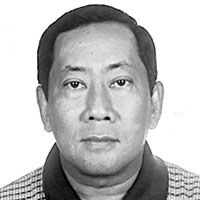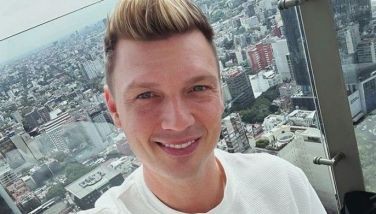From Pearl Harbor to Hiroshima

It was exactly 67 years ago to this day when that “Day of Infamy” put Pearl Harbor on the map of the world when the Japanese Imperial Fleet led by Admiral Isoroku Yamamoto took the US Pacific Fleet by complete surprise early Sunday morning (Dec. 7 yesterday was also a Sunday). The Japanese air armada of 353 aircraft arrived in Oahu at 7:50 a.m. and flight leader Capt. Mitsuo Fuchida signaled his First Flying Petty Officer Tokunobu Mizuki with a “To! To! To!” The attack order was transmitted to all pilots who were in radio silence and was followed by Fuchida’s famous “Tora! Tora! Tora! (Tiger! Tiger! Tiger!),” the code name that signified that the attack was a complete surprise – and the rest was history.
The Japanese air armada sank four US Navy battleships – the USS Arizona, USS Oklahoma, USS Tennessee and USS West Virginia – and damaged two others, the USS California and USS Maryland, which were re-floated and used during the war. The Japanese Air Fleet also destroyed three cruisers and three destroyers and destroyed 188 aircraft on the ground and killed a total of 2,402 sailors and wounded 1,232 others. The Japanese lost 29 aircraft and five midget subs.
Yes, in our history books we always say that Pearl Harbor was attacked on Dec. 7, but for us in the Philippines, it was already Dec. 8 and a squadron of Japanese Zero aircraft flying from bases in Formosa bombed the US naval facilities in Cavite. Thus, you can say that the surprise attack on Pearl Harbor also coincided with the first Japanese attacks in the Philippines. Pearl Harbor marked the entry of the United States into the conflict already raging in Europe where Adolf Hitler had practically overrun all of Europe, except Great Britain and Russia. The Pacific War thus made that conflict global and it became known as World War II… a.k.a. the Great Patriotic War!
For history buffs like me, one of the best books I have on the Pacific War is entitled “God’s Samurai,” which was written by Gordon W. Prange with Donald M. Goldstein and Katherine V. Dillon. This was really the story of the life of Capt. Mitsuo Fuchida who, together with his buddy Capt. Minoru Genda, planned and then flew to Pearl Harbor as the air arm of Adm. Yamamoto and carried out the infamous attack on Pearl Harbor.
Actually Prange befriended Fuchida who retired in the US after the war. They talked every day with Prange taking notes on Fuchida’s activities from the planning of the Pearl Harbor attack down to that fateful day when Japan surrendered to Gen. Douglas MacArthur on board the USS Missouri in Tokyo Bay on Sept. 2, 1945. Yes, Mitsuo Fuchida the man who led the attack on Pearl Harbor was made to witness the end of World War II during the signing of the unconditional surrender.
Fuchida’s life is so interesting; he even stayed in Cebu for a while when he set up the Japanese Airbase in Lahug. He even flew to Davao to set up an Officers’ Club there. Most of my books about World War II are from the US perspective. The book on Fuchida is the most thorough book on the war from the Japanese perspective. His story gives me a complete account of certain historical events, when in the past, I could only see them from the perspective of American authors.
After the war was over, Fuchida went into soul-searching and finally found his God in our Lord Jesus Christ, hence the title of the book is “God’s Samurai.” That part of the story takes about half of the book. It started just before the attack on Pearl Harbor when Fuchida’s plane ran out of fuel and crash-landed beside a Chinese junk. With Japan invading Manchuria, he thought he would be killed even before the Pearl Harbor attack could be commenced. But the Chinese junk returned him to his aircraft carrier, the Akagi. Sir Max Soliven had a beautiful 10-foot model of this carrier.
Then toward the end of the war on Aug. 5, 1945, Capt. Fuchida had a meeting in the City of Hiroshima to map out ways to attack B-29 bases in the Marianas by crash-landing 200 bombers with suicide troops to neutralize these bases. But he had to return to Tokyo for another urgent meeting and the next day, Hiroshima communications officer Lt. Hashimoto called the Kure Naval Station that “All Hiroshima was destroyed by one bomb.” If not for that urgent meeting Fuchida would have been incinerated with his friends at the Yamato Hotel in Hiroshima.
This got him into thinking that a higher being wanted him to live. Thus after the war, he embraced Christianity, though he was a Protestant and had a natural dislike for Catholics. I was in Pearl Harbor years ago and I was in Hiroshima a week ago. It was a war that we should never forget. Japan today is prosperous in peace, thus they too believe… never again war!
* * *
For e-mail responses to this article, write to [email protected]. Bobit Avila’s columns can also be accessed through www.philstar.com. He also hosts a weekly talkshow, “Straight from the Sky,” shown every Monday, 8 p.m., only in Metro Cebu on Channel 15 on SkyCable.
- Latest
- Trending
































